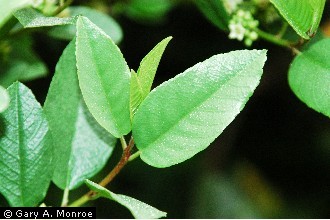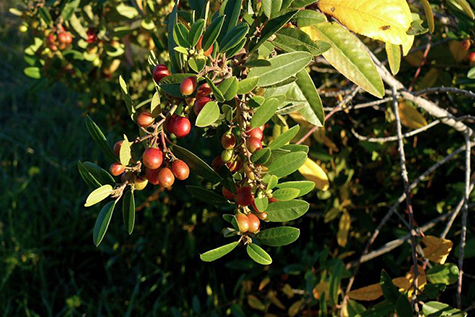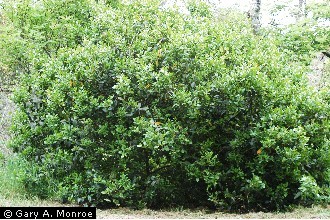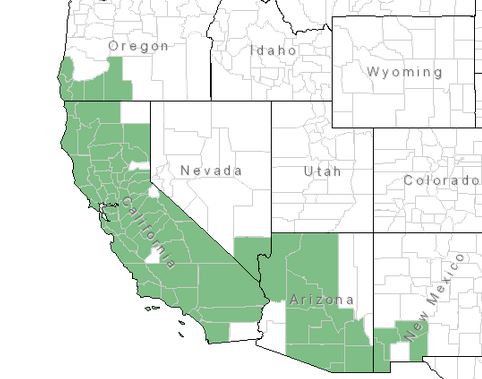Taxonomy: Kingdom - Plantae (plants). Subkingdom - Tracheobionta (vascular plants). Superdivision - Spermatophyta (seed plants). Division - Magnoliophyta (flowering plants). Class - Magnoliopsida (dicotyledons). Subclass - Rosidae. Order - Rhamnales. Family - Rhamnaceae (buckthorn). Genus - Frangula Mill. Species - Frangula californica (Eschsch.) A. Gray
Ecology: California coffeeberry is a long-lived and moderately shade-tolerant shrub that is highly persistent within chaparral, hardwood woodland, and open conifer forests. During extended fire free-intervals, California coffeeberry is able to outlive, overtop, and shade out many shorter-lived species. As a component of relatively open canopied stands, plants persist until the next fire occurs, at which time sprouted individuals become part of the initial postfire vegetation.California coffeeberry exhibits a wide ecological amplitude. Sites include dry flats, moist slopes, ravines, and rocky ridges, usually at elevations below 1,677 m. Soils are typically dry and well drained. Established plants tolerate full sun to moderate shade.



